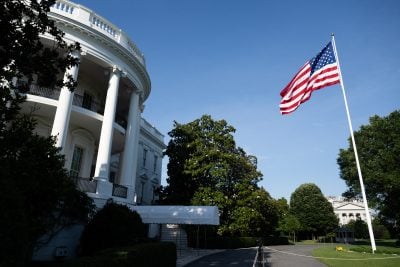Kenya is undergoing an infrastructure construction boom unknown since the early days of independence. This, writes Wanjohi Kabakuru from Nairobi, is the direct result of its six-year policy to ‘Look East’.
Under its ‘Look East’ policy, Kenya has deliberately altered its investment climate to favour the Sino-Indian-Persian triumvirate rather than its ‘traditional’ partners, Europe and the US.
Analysts believe that it is largely due to this policy, pursued for the last six years, that has seen the Chinese not only upstaging the British as the leading foreign direct investor in Kenya but also transforming Kenya’s infrastructure landscape.
The Chinese foray into Kenya began in April 2006, (some eight months after President Kibaki’s visit to China) when President Hu Jintao made an official visit to Nairobi.
He outmanoeuvred all Western oil-prospecting conglomerates and returned to Beijing with significant offshore oil exploration deals. The state-controlled Chinese National Offshore Oil Corporation (CNOOC) was accorded six expansive oil prospecting blocks covering some 115,343 sq km in the Kenyan 600km coastal stretch and Kenya’s northern region.
China is also leading the pack in securing lucrative infrastructure, energy and telecommunications contracts. A flurry of heavy infrastructural construction works is currently taking place all over Kenya. Indeed since independence, Kenya has never seen massive construction of the magnitude as that now taking place. Today China controls the majority an estimated 70% of infrastructure projects. Road construction, airports, water systems, power generation, housing and hospitals are all under the Chinese, who are believed to offer extremely competitive bids.
In addition to the Nairobi-Thika highway, which is being re-engineered at a total cost of $375m, the upgrading and rehabilitation of the Jomo Kenyatta International Airport (JKIA) at a cost of €187m has been awarded to the China National Aero Technology International Engineering Company (CATIC).
But China is not the only new player on the infrastructure stage. India’s Sanghi Group has already invested $80m in a cement factory deep in the Rift Valley. Another Indian giant, the Mehta Group, has also sunk some $200m into the cement business in the same Rift Valley area. The new cement factories are in response to a very substantial increase in building construction, both commercial and residential, that has followed in the wake of a fast-growing middle-class phenomenon.
Some insinuate that part of the housing construction boom, financed by the Somali community, could be a conduit to launder cash from piracy and other illegal activities but can so far provide no evidence to their claims. Indian giants are dominating the telecoms industry. Essar Telecoms bought out Econet Wireless and is now known as Essar Telecom (Kenya).
India’s telecom colossus Bharti Airtel followed suit in 2010 when it bought out Zain for some $8.3bn and undertook a complete makeover from Zain into Airtel with a promise to pump in some $150m into the Kenyan ICT infrastructure market.
Energy rush
But Essar’s most-prized asset in Kenya is its $600m stake in Kenya’s oil refineries, where it has a 50% share. Essar Energy Overseas has acquired a 50% stake in Kenya Petroleum Refineries Limited (KPRL). The remaining stake is with the Kenyan government. This was the first deal for the company outside India. Essar Energy Overseas is a subsidiary of Essar Oil.
Essar’s acquisition means that the existing shareholders, Shell Petroleum, Chevron Global Energy and BP Africa have been bought out. Essar’s move was seen as strategic and long term not just in Kenya’s energy infrastructure, but in anchoring itself to reap rewards from South Sudan and hinterland Africa by having an unrivalled stake in Kenya, which is the preferred gateway into East and central Africa.
Mombasa has the only refinery in East Africa. It produces LPG, gasoline, diesel, kerosene and fuel oil and is slated for upgrading by Essar at a cost of $400m-$450m.
KPRL’s products are sold in the Kenyan market and exported to neighbouring countries, including Tanzania, Uganda, Burundi and Rwanda. Talks are under way to refine Uganda’s oil at KPRL, hence the upgrading and expansion.
“Demand for petroleum products in these markets is estimated at 5m tons per annum. We are pleased that our first refinery acquisition outside of India will be made in Kenya and look forward to working with the Kenyan government to develop KPRL further and finalise the upgrade project,” Essar Energy Holdings chief executive officer Naresh Nayyar says.
Dubai-based Black Marlin Energy is yet another player that has joined the Kenyan energy rush. The company has been granted two huge blocks L17 and L18 of some 300 sq km, which run from the Tanzanian border all the way to Kilifi.
The Great Wall Drilling Corporation (GWDC), a subsidiary of China National Petroleum Corporation (CNPC), has secured a lucrative $25m contract to drill new geothermal wells from the country’s geothermal agency, the Geothermal Development Corporation (GDC).
In October 2009, CNOOC was awarded more oil blocks in Kenya’s northern frontier districts and has lately intensified its prospects by sinking a well in Bhogal near Isiolo, in Eastern Province. The well in Bhogal is expected to be the deepest oil exploration well – stretching some 5km.
But the energy party has not just been a Chinese-Indian affair. Brazil has entered into an agreement with the Kenyan government in the production of sugar and ethanol from sugar cane and biofuels from the wonder plant jatropha. Two Joint Commissions on Cooperation meetings have been held since 2005 between Nairobi and Brasilia. The first one was in 2005. A third meeting was held in Nairobi in July 2010 when Brazil ’s former President Lula Da Silva visited Nairobi and signed several bilateral cooperation agreements on biofuels production, education and investment. Brazil was expected to secure tenders in geothermal production and challenge the dominance enjoyed by Chinese firms, however Japan ’s Tsusho Corporation and South Korea ’s Hyundai Engineering and Construction won the lucrative $1.4bn deal in early November 2011 when they signed the agreement with KenGen (Kenya Electricity Generation Company) to build a new geothermal power plant.
Libya, too, despite its current political turmoil, has been very much part of the country’s energy landscape. Tamoil, the Libyan state-owned oil company, (operating in Kenya as Oil Libya) entered East Africa when it won the tender for the crucial extension of the Kenyan oil pipeline from Eldoret to Kampala, Uganda.
In November 2007, President Mwai Kibaki visited Libya and signed an MOU with the late Libyan leader Colonel Muammar Gaddafi, granting Libya exclusive rights in the Kenyan oil market, which for decades had been in the clutches of Western oil conglomerates.
This precipitated a price war which saw pump prices reaching an all-time high. Oil Libya went ahead and bought out the US’s Mobil’s Kenyan business.
Though uncertainty now looms over the ownership of Oil Libya and other Libyan assets due to the change of guard in Tripoli, the business acumen they displayed in their East African ventures cannot be underestimated.
Tehran too has also not been left behind. It has invested $70m in Kenya’s engineering sector and when President Mahmoud Ahmadinejad visited Nairobi in 2009, he left having signed 12 pacts on energy, oil, road construction and, the most notable, nuclear energy.
Kenya recently received the go-ahead to set up a nuclear reactor from the Vienna-based International Atomic Energy Agency (IAEA) and is seeking Tehran’s help on this. Currently, Turkey is undertaking a massive slum-upgrading project in the coastal resort city of Mombasa.
Nairobi’s ‘Look East’ strategy certainly seems to be paying off handsomely.
Want to continue reading? Subscribe today.
You've read all your free articles for this month! Subscribe now to enjoy full access to our content.
Digital Monthly
£8.00 / month
Receive full unlimited access to our articles, opinions, podcasts and more.
Digital Yearly
£70.00 / year
Our best value offer - save £26 and gain access to all of our digital content for an entire year!
 Sign in with Google
Sign in with Google 


